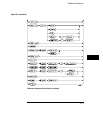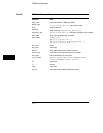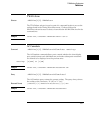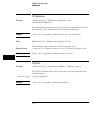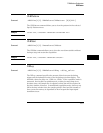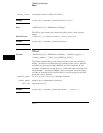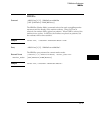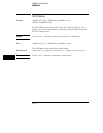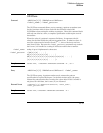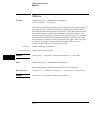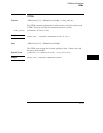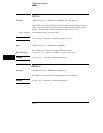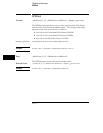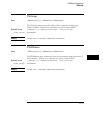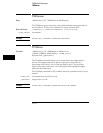
OPATtern
Command :MACHine{1|2}:TWAVeform:OPATtern
<label_name>,<label_pattern>
The OPATtern command allows you to construct a pattern recognizer term
for the O marker which is then used with the OSEarch criteria and
OCONdition when moving the marker on patterns. Since this command deals
with only one label at a time, a complete specification could require several
invocations.
When the value of a pattern is expressed in binary, it represents the bit
values for the label inside the pattern recognizer term. In whatever base is
used, the value must be between 0 and 2
32
− 1, since a label may not have
more than 32 bits. Because the <label_pattern> parameter may contain
don’t cares, it is handled as a string of characters rather than a number.
<label_name> string of up to 6 alphanumeric characters
<label_pattern> "{#B{0|1|X} . . . |
#Q{0|1|2|3|4|5|6|7|X} . . . |
#H{0|1|2|3|4|5|6|7|8|9|A|B|C|D|E|F|X} . . . |
{0|1|2|3|4|5|6|7|8|9} . . . }"
Example OUTPUT XXX; ":MACHINE1:TWAVEFORM:OPATTERN ’A’,’511’"
Query :MACHine{1|2}:TWAVeform:OPATtern? <label_name>
The OPATtern query, in pattern marker mode, returns the pattern
specification for a given label name. In the time marker mode, the query
returns the pattern under the O marker for a given label. If the O marker is
not placed on valid data, don’t cares (X) are returned.
Returned Format
[:MACHine{1|2}:TWAVeform:OPATtern] <label_name>,
<label_pattern><NL>
Example OUTPUT XXX;":MACHINE1:TWAVEFORM:OPATTERN? ’A’"
TWAVeform Subsystem
OPATtern
23–13



